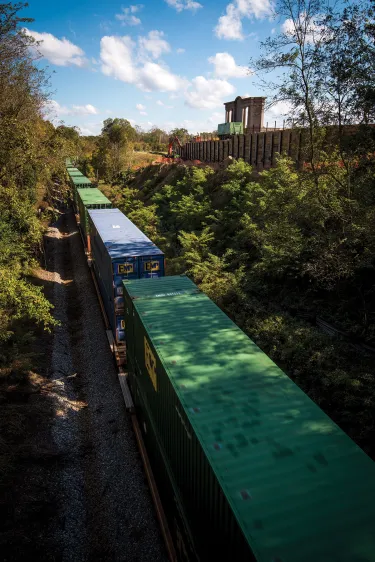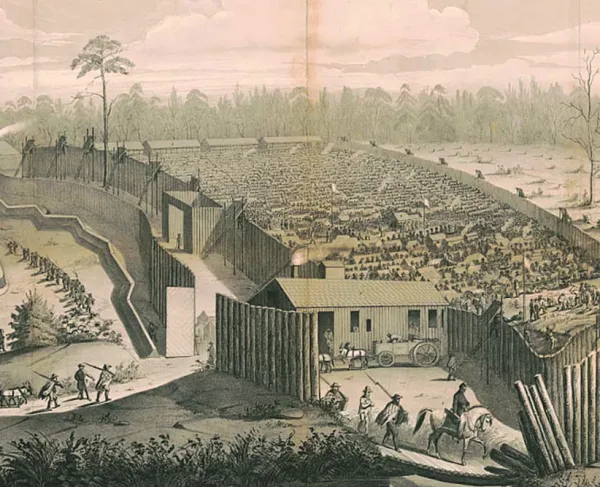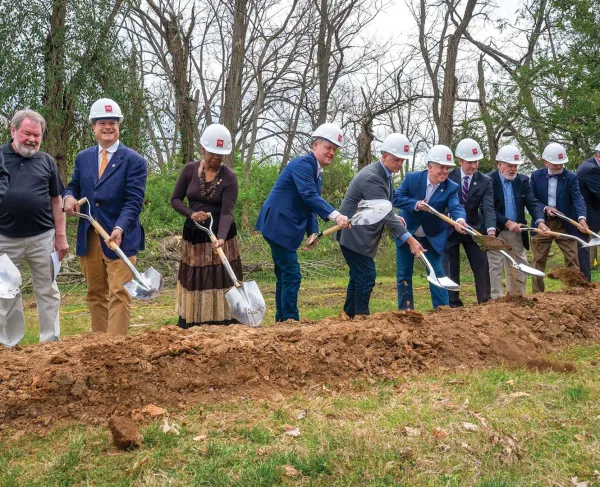Erosion Undermines History at Vicksburg National Military Park

The most serious battle being fought at Vicksburg National Military Park today, according to park staff, is against erosion, the process by which earth is carried away by wind or water. The loess soil type found in abundance at Vicksburg is particularly vulnerable to erosion; many of the battlefield’s most familiar landscapes have been shaped in this way, but they can also be unstable and present issues for visitor safety.
Loess is made up of silt-size pieces of wind-blown dust, typically less than 20 percent clay. Highly porous and loosely held together by calcium carbonate, loess is often called “yellow earth,” and readily forms both natural vertical bluffs, which can be easily excavated into cave dwellings, and capillary crevasses that allow for water flow — all formations quite evident to Vicksburg visitors.
Three types of large-scale erosion, known as mass wasting, impact the park. Creep is slow, continuous downward movement, the type that will cause headstones in old cemeteries to sit at exaggerated tilts. Slump occurs when the base of a slope is undercut — such as by a stream — and without enough support, the land above moves downslope as a unit, often called a “slump block.” Landslides are fast moving and dangerous, although small ones can often be observed on the edges of gullies after major rain events. The aftermath of significant storms will regularly see portions of the park closed to vehicular or pedestrian access, as rangers assess any damage and offer cleanup or stabilization services.

With erosion having long been a threat to the park landscape, much effort has gone into how best to combat it. Vegetation is known to help keep soil in place. During the 1930s, the Civilian Conservation Corps planted thousands of trees at Vicksburg to help control erosion, but this is now giving way to more modern methods. Plants are now specifically chosen for performance in this soil and do not grow as high, maintaining viewsheds for visitors. Plus, the downing of a large tree with a hefty root-ball can trigger a sizable erosion event. Engineered structures and retaining walls also help combat erosion in particularly vulnerable areas.
The area around the Railroad Redoubt and Texas Memorial, site of an action featured prominently in the Winter 2020 issue of Hallowed Ground, is among those targeted by the National Park Service (NPS) for stabilization. After years of study and design, and securing funds for the project, a major rehabilitation endeavor for the slope to the north of these features was begun on February 4, 2020. Unfortunately, this came amid a winter of heavy rains, and by March 1, up to one-third of the park was closed as the NPS responded to damage at slopes, roads and portions of Vicksburg National Cemetery. So significant was the damage that assistance in assessing and planning for repair was rendered by the U.S. Geological Survey and the U.S. Army Engineering Research and Development Center. In September, U.S. Sen. Cindy Hyde-Smith announced that among the $22.7 million in emergency funding for federal road repairs in Mississippi, $8 million had been allocated to the NPS for work at Vicksburg and along the Natchez Trace National Parkway.





